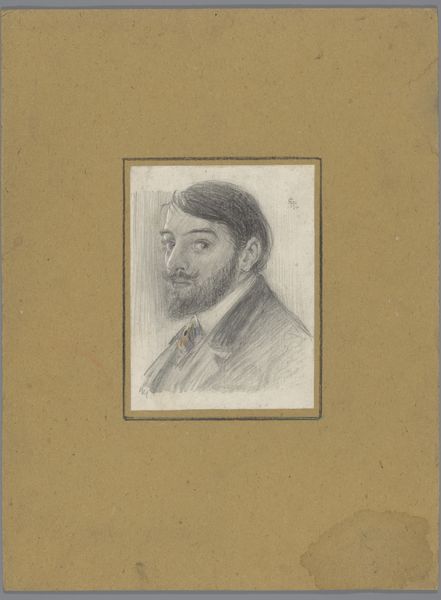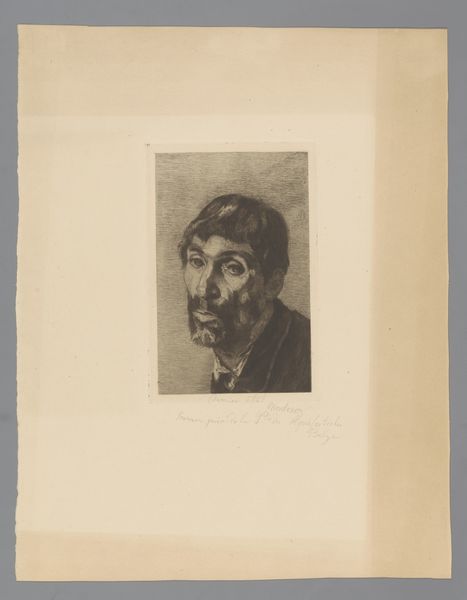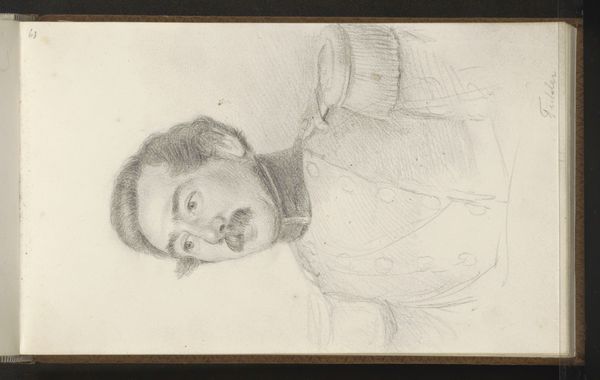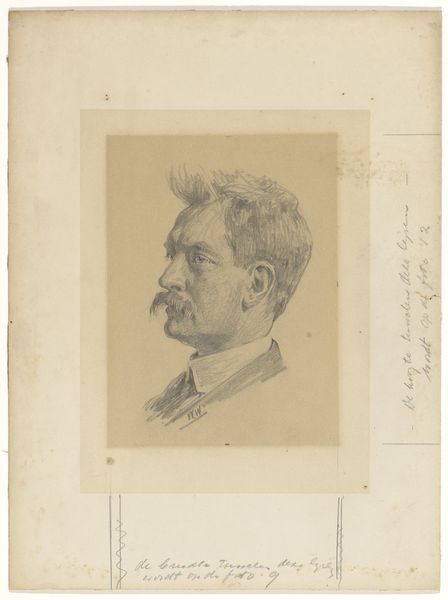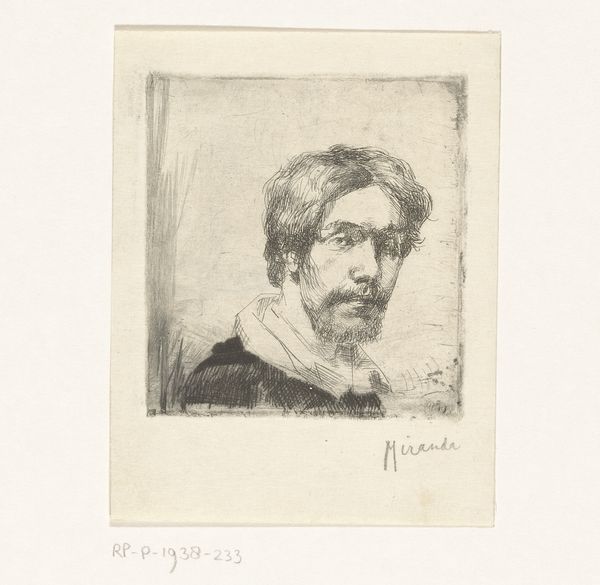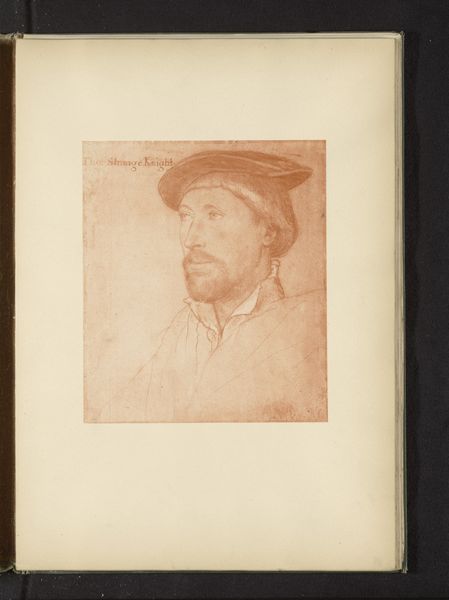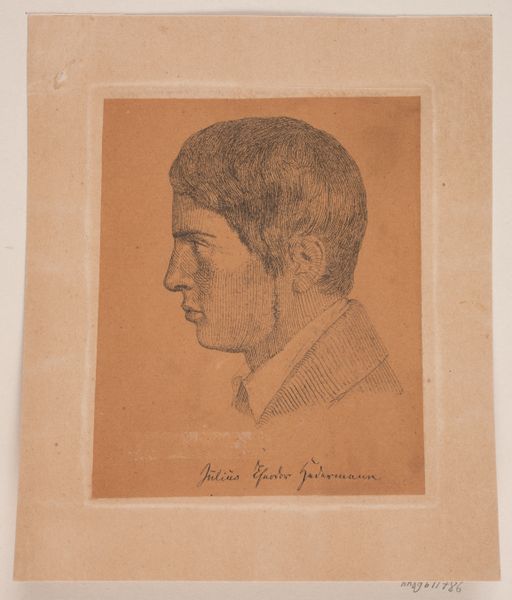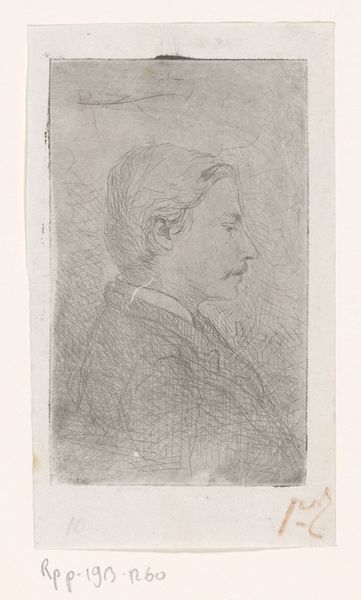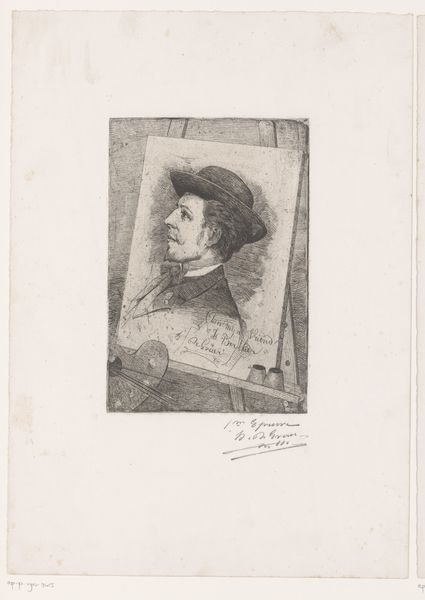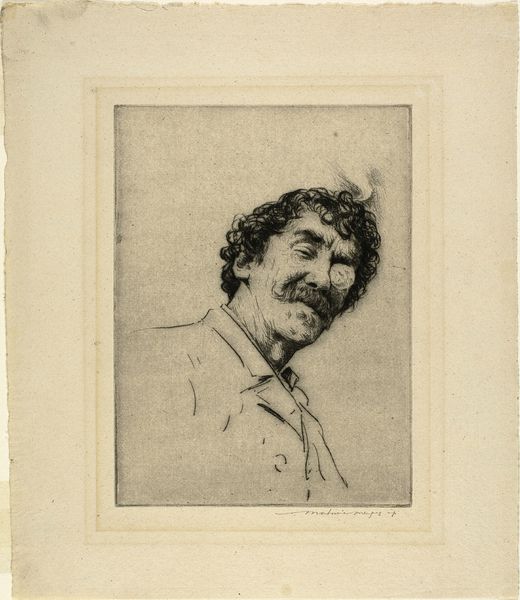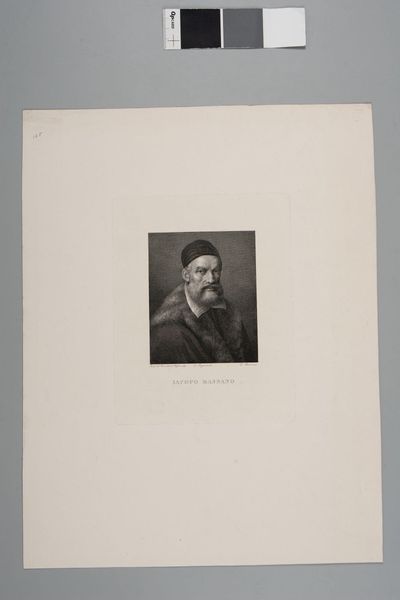
Fotoreproductie van een portret van Nicholas Poyntz door Hans Holbein before 1877
0:00
0:00
anonymous
Rijksmuseum
drawing, ink, pen
#
portrait
#
drawing
#
11_renaissance
#
ink
#
pen
#
northern-renaissance
Dimensions: height 255 mm, width 181 mm
Copyright: Rijks Museum: Open Domain
Curator: Before us is an intriguing photograph, "Fotoreproductie van een portret van Nicholas Poyntz door Hans Holbein," which, to clarify, is a photographic reproduction of a drawing originally created by Hans Holbein. It's thought to have been produced sometime before 1877 and resides here at the Rijksmuseum. Editor: My first thought is the subtlety of line. The way the pen and ink create such soft shading is almost unexpected in portraiture of this era. It lends a kind of vulnerable humanity to the figure. Curator: It's interesting you say that. Consider the context of Holbein's career; he was a master of portraying the Tudor elite. Reproductions like this one were incredibly important for disseminating images of power, reinforcing social hierarchies. Look at Poyntz’s cap; not flashy, but stylish. A clear, quiet message. Editor: But within that framework, note how Holbein uses the pen to render the light catching his subject's cheek. There's a gentle arc there, softening what could have been a rigid, austere profile. Semiotically, this little curve transcends purely propagandistic intent; we perceive individuality beyond his rank. Curator: Individuality shaped by, and reflecting, the court of Henry VIII. Portraits, even sketches, weren’t casual things. The materials used, the style adopted; these choices served to portray status, and by circulating these portraits to consolidate the Tudors' still precarious rule. The reproduction allows far greater reach. Editor: True, the reproduction grants broader public consumption. I still believe we cannot ignore the intimate scale here. Holbein's mastery resides in how much personal expressiveness can be channeled via minimal, incredibly refined, technique. Curator: Absolutely. The photograph, though, removes us one step further; from direct mark of Holbein to mechanically reproduced image and it becomes far less about that connection with him and his patron and something with its own agenda in a very different context. Editor: So perhaps that initial feeling I had, that vulnerable humanity, is shaped by the knowledge of both a skilled artist behind it, as well as the historical ripples of power embedded in those simple strokes of pen. Curator: Precisely. Examining artwork allows a journey through varied lenses revealing nuances we would otherwise miss, in the formal rendering and its impact throughout society. Editor: And for me, acknowledging this reproductive method makes visible how technical art has the potential to emphasize an artist's technical skills, revealing unexpected depth.
Comments
No comments
Be the first to comment and join the conversation on the ultimate creative platform.
